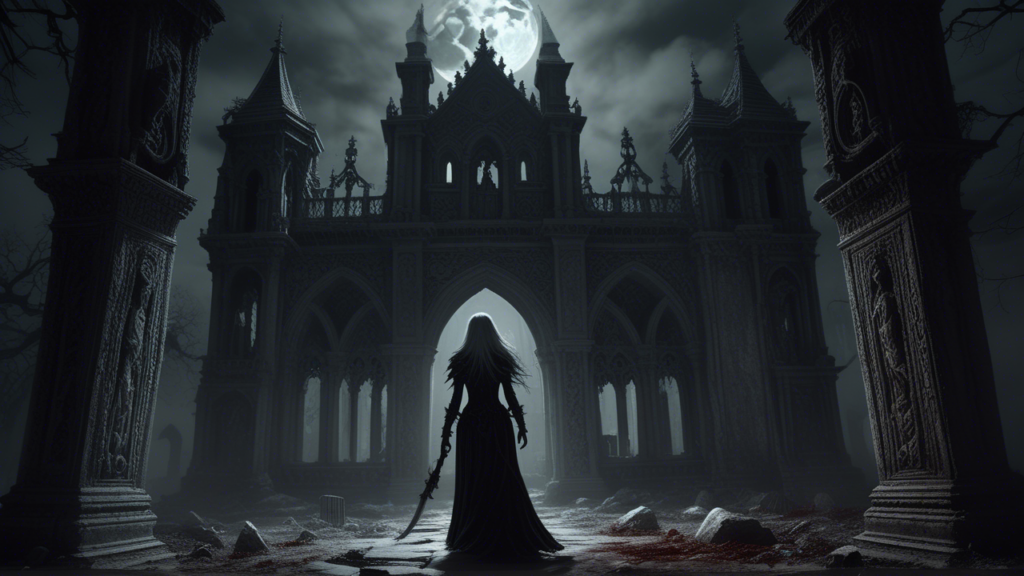In the mist-laden hills of Ireland, where ancient stones and crumbling ruins echo with centuries of stories, the legend of the Banshee endures. Known for her chilling wail, the Banshee is said to be a harbinger of death, a spectral figure who foretells the passing of a loved one through her mournful cries. Rooted deeply in Irish folklore, the Banshee is both feared and revered, embodying themes of grief, fate, and the mystery of life’s end. Let’s delve into the history, symbolism, and cultural significance of the Banshee, and how this figure continues to captivate and unsettle people today.
The Origins of the Banshee in Irish Folklore
The Banshee, or bean sídhe in Irish, literally translates to “woman of the fairy mound” or “fairy woman.” This ties her closely to Ireland’s ancient belief in the aos sí, or “people of the mounds,” a race of supernatural beings associated with the earth and the land’s mystical past. The bean sídhe is a spirit of the Otherworld, often appearing to families of old Irish lineage to signal an imminent death.
According to Dr. Máire O’Connor, an expert in Celtic folklore, the Banshee has been a presence in Irish mythology since at least the 8th century, and she is believed to represent both a connection to the family line and a spiritual guide to the afterlife (O’Connor, Irish Myths and Folklore, 1998). Traditionally, the Banshee would attach herself to specific families, particularly those of noble lineage, such as the O’Neills, the O’Briens, the O’Connors, and the Kavanaghs. Her connection to these families further underscores her role as both a symbol of heritage and a reminder of life’s fragility.
The Appearance and Characteristics of the Banshee
Descriptions of the Banshee vary widely, depending on the region and source. Some accounts portray her as a beautiful young woman, her long, flowing hair and ethereal appearance adding an eerie beauty to her ominous message. Others describe her as a withered old hag, symbolizing the decay and inevitability of death. Regardless of her form, the Banshee’s defining characteristic is her mournful, piercing wail—a cry said to cause chills and unsettle anyone who hears it.
Her wail is often described as a mixture of lament, sorrow, and otherworldly keening. In Irish culture, keening (caoineadh) was a traditional mourning practice performed by women at funerals, which lends the Banshee’s cry a connection to real-world expressions of grief. Dr. Seamus Kelly, a historian specializing in Celtic practices, notes that the Banshee’s cry may have origins in these keening rituals, preserving the emotional weight of these laments (Kelly, Celtic Mourning Traditions, 2002).
Symbolism of the Banshee: Death, Grief, and Heritage
The Banshee is a deeply symbolic figure, embodying not just death, but also the themes of grief, familial heritage, and the spirit’s journey.
Death and the Transition to the Afterlife: At her core, the Banshee is a harbinger of death. In Irish tradition, death is not necessarily feared but rather accepted as a natural part of life’s journey. The Banshee’s presence at this transitional moment speaks to her role as a guide to the afterlife, signaling that a loved one’s spirit is preparing to pass on.
The Symbolism of Grief: The Banshee’s mournful cry is more than a warning; it represents the profound sorrow of impending loss. Her connection to keening, the practice of ritualistic mourning, illustrates the importance of grieving openly and communally. The Banshee’s cries echo the pain felt by those left behind, suggesting that death impacts not only the individual but the family and community as a whole.
Heritage and the Connection to Family Lineage: Traditionally, the Banshee was believed to follow noble families, particularly those with ancient Irish roots. This connection to lineage reflects the cultural emphasis on heritage and the continuity of family. The Banshee’s appearance is a reminder that each life is part of a larger tapestry, woven together by ancestry, tradition, and the spirits of those who came before.
The Banshee in Irish and Global Culture
The Banshee has long been a source of fascination in Ireland, where her legend is both feared and respected. Over time, however, her story has spread beyond Irish shores, and she has become a prominent figure in global folklore, often adapted to fit the cultural context of different regions.
In contemporary culture, the Banshee has appeared in literature, movies, and television shows, sometimes as a fearsome figure and other times as a sympathetic character. These portrayals often dilute her traditional role as a family-oriented harbinger of death, instead presenting her as a generic ghostly figure. However, some works, like the Irish horror film The Hallow (2015), have remained true to the Banshee’s roots, exploring the dual nature of her presence as both haunting and protective.
Scientific Interpretations and Skepticism
As with many supernatural legends, skeptics have sought to explain the Banshee’s wail in natural terms. Some suggest that the eerie sounds attributed to the Banshee may have originated from nocturnal animals, like foxes or owls, whose cries can carry over great distances and sound unnervingly human. Others believe that the Banshee legend could be connected to the mourning practices of ancient Irish clans, whose keening could be heard echoing through the countryside, especially during times of loss.
While these explanations may offer rational insights, they do not fully account for the Banshee’s cultural significance. For many in Ireland, the Banshee is more than a mysterious sound in the night; she is a bridge between the physical world and the spirit realm, embodying cultural beliefs about life, death, and the bonds that connect us.
The Banshee’s Legacy: A Haunting Reminder
Today, the Banshee remains an iconic figure in Irish folklore, a ghostly reminder of life’s impermanence and the importance of honoring one’s ancestors. Her chilling wail, whether imagined or real, carries a powerful message about the value of family, the inevitability of death, and the emotional weight of grief. Through the Banshee, we are reminded that life is fleeting, that the bonds of family endure beyond death, and that we all share a connection to those who came before us.
Sources:
- O’Connor, M. Irish Myths and Folklore, 1998.
- Kelly, S. Celtic Mourning Traditions, 2002.
- Driscoll, J. Ghosts of Ireland: History and Legend, 2009.


